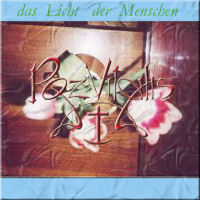

Artist/ Band: Roz Vitalis
Title: Das Licht Der Menschen
Label: Self release
Year of Release: 2004
Artist/ Band Link (click for details/ ordering)
 
The Review:
- When does a work cross over from progressive to experimental? From rock and roll to avant garde? Why do we consider Mussorgsky's Pictures At an Ehibition, as redone by Emerson Lake and Palmer, rock and roll, but place the version by Tomita in the Classical section? Why is a band that sounds like an electronic version of a Gorecki Symphony not Classical? I am convinced that the ghettoization of popular music (in its
various forms) has left Classical music far poorer, with less quantity of music to claim as its own. This album is a case in point. It is a great avant-prog album, but it should also be recognized as a great 21st Century Classical composition. Maybe in 20 years time, the lines will blur enough that this work will be taught in composition class alongside
Dufay, Bach, Mozart, Gershwin, Bernstein, Goreki, Parch, Gilbert & Sullivan, and Lennon & McCartney, -- oh, and Ivan Rozmainsky. I think I've made my point.
Das Licht Der Menschen (The Threesunny Light Superpower) is a concept album about the concept of the theological Trinity, and it uses the word 'light' to describe "Trinity" as seen through different languages and musical interpretations. Sections of the works border on the polytonal, so unless you are a fan of later Stravinsky or Prokoffiev the
deliberate dissonances may be jarring.
1. Potoki Sveta Trisolnechnogo
Surprise... That was my first thought. Shades of early King Crimson, passages reminiscent of the soundtrack to the BBC Sci-Fi series "Blake's 7", A section of organ solo that could have been played by Palestrina -- or C.P.E. Bach, except C.P.E. never played chord progressions like these... Wait, now it's Keith Emerson doing Knife Edge. The mind begins to boggle, and we're only half way into the first piece.
2. Colore Pieno di Luche
A series of seeming improvisations against an organ continuo. Deliberately out of tune recorders against tubular bells against voices. Reminiscent of a recording by The Dufay Collective. Then again, two minutes later, we're in the the middle of a Frank Zappa improvisation. I made the mistake of listening to this for the first time while writing software at a client site. A shout of laughter at a brilliant turn of musical phrase made me quite conspicuous. After explaining myself, several Zappa fans challenged my interpretaion, until after I played the section in question for them. Expect sales to go up by four as a result.
3. Ablakok, Csillagok, Feny
Drums, tympanii, tubular bells, winds, harp, strings, harpsichord. References to other works -- a hint of "The Star Spangled Banner" followed by a section which seems to feature the koto. Much later, am I the only one to hear the subtle references to Mike Oldfield's 'Tubular Bells' which close this piece? I'm not talking about Oldfield's famous string opening theme--but one of the secondary themes played by the Tubular
Bells. Near the end of Ablakok, Csillagok, Feny -- around minute 19 -- the tubular bells duet with the synthesized bells. The Oldfield theme is echoed in this duet (and elsewhere in the piece: check out minute 9 and the vocal solo against tuned percussion). It is followed by more of what I like to call "freeform Zappa", wonderfully done. The ending comes with a suddenness which startled me at first listen. I had to replay the
last two minutes to really hear what the composer was doing. We end, not with a bang, (bong?) but with a bell's whisper...
Afterword: Now I have to play it again. This one has me hooked.
Reviewed by Greg Amov on June 29th, 2006

Tracks:
- 1. Potoki Sveta Trisolnechnogo
- 2. Colore Pieno di Luche
- 3. Ablakok, Csillagok, Feny
Reviewed DiscographyHere are other reviews by this artist at ProgNaut.com.

Contact Us
Back
Copyright © 1998-2011, ProgNaut.com, All Rights Reserved.
|



